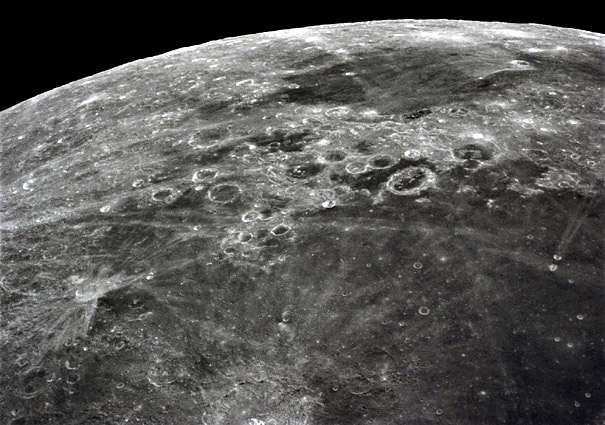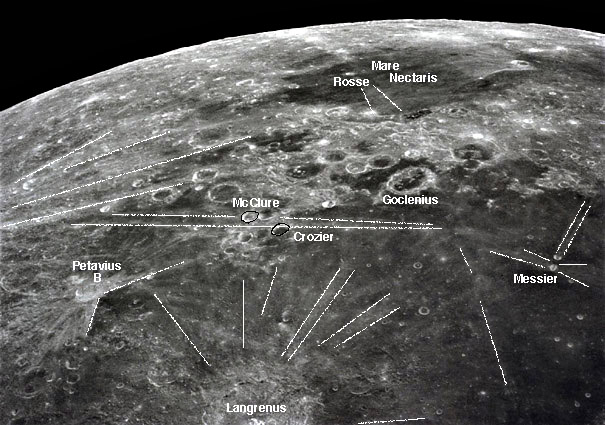Difference between revisions of "April 16, 2004"
| Line 25: | Line 25: | ||
<p class="story"><b>Related Links:</b><br> | <p class="story"><b>Related Links:</b><br> | ||
[http://www.lpi.usra.edu/meetings/moon99/pdf/8035.pdf Composition & Origin Crater Rays]</p> | [http://www.lpi.usra.edu/meetings/moon99/pdf/8035.pdf Composition & Origin Crater Rays]</p> | ||
| − | <p | + | <p><b>Yesterday's LPOD:</b> [[April 15, 2004|A Burning Issue]] </p> |
| + | <p><b>Tomorrow's LPOD:</b> [[April 17, 2004|Cassini North]] </p> | ||
</td> | </td> | ||
</tr> | </tr> | ||
Revision as of 13:47, 1 February 2015
Eastern Rays
Image Credit: Apollo 16 AS16-121-19449 |
|
Eastern Rays I love views from unfamiliar perspectives because they force me to look freshly at the areas shown. This image taken by Apollo 16 astronauts doesn't disappoint. As the astronauts flew over the eastern limb they took this photo looking across Mare Fecunditatis to Mare Nectaris and the bright lunar highlands beyond. High solar illumination (and unsharp mask in Photoshop!) highlighted the strong albedo contrasts of dark maria material and bright crater rays. The crater Langrenus is at the bottom of the image (mouse over) with its grayish radiating rays. To the south (left) is the 33 km wide crater Petavius B, whose Proclus-like vee-shaped ray pattern demonstrates was formed by an oblique impact. On the right side of the image is the familiar pair Messier and Pickering (oops - that's an old designation, the crater with the parallel railway track-like rays is now called Messier A). Notice that you can also see the butterfly wing rays extending out from Messier itself. These rays, perpendicular to the Messier A ones, are harder to see, but are characteristic of a very low angle oblique impact. Back to the left half of the image you can see at least four sets of rays that converge outside the frame on one or the other of the two amazingly bright (and small) ray craters, Stevinus A and Furnerius A. Another bright ray swath comes eastward from Rosse in the middle of Nectaris. This particular ray is peculiar because it so large. Some people have suggested that it is actually a ray from Tycho. Other rays here appear to be orphans. Two roughly parallel rays passing near McClure and Crosier have no obvious source crater, as is true for a long ray passing perpendicular to a line joining Langrenus and Messier. Looking at the ray-crossed surfaces of Fecunditatis and Nectaris makes it easy to understand how dark mare material gets lightened over time. Some mare deposits have been completely veneered by rays and other ejecta so that we can only detect them by small dark halo craters that excavate underlying dark mare. Such slightly buried mare are called cryptomare. Related Links: Yesterday's LPOD: A Burning Issue Tomorrow's LPOD: Cassini North |
Author & Editor:
Charles A. Wood
COMMENTS?
Register, and click on the Discussion tab at the top of the page.
Contributions to http://www2.lpod.org/ are licensed under a Creative Commons Attribution No-Derivative-Works Non-Commercial 3.0 License. 





